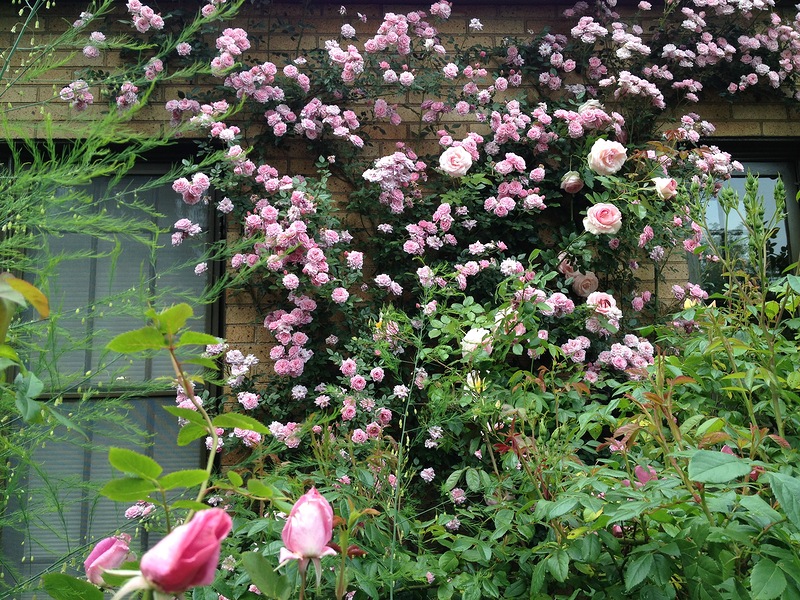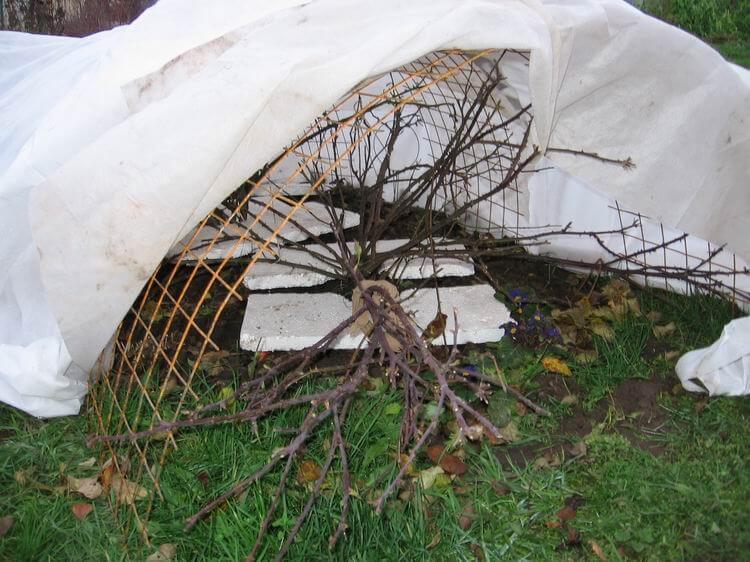Rose of Indigoletta (Indigoletta)
Content:
Roses of unusual shades are rare and are of particular interest to flower growers. One of these varieties is the Indigoletta rose.
Short description
The inflorescences of this variety include 2 or 3 flowers, each of which consists of 25-30 leaves and has a diameter of about 10 cm. The bud is usually goblet purple. Blooming flowers are lilac-pink or lilac, slightly fading into a blue hue. The flowering process differs in duration. The foliage is dark green.
The shape of the bush is of three types:
- narrow pyramidal;
- spreading;
- spherical.
The height of a rose can vary from 30 cm to a meter. This amazing terry rose is characterized by a stunning aroma, reminiscent of an expensive exquisite perfume.
The main feature of the variety is its very long flowering period, which takes place in two stages. At this time, about 200 flowers can be formed on one peduncle at a time. The culture can bloom before the first snow falls, after which it falls into a state of dormancy.
Advantages and disadvantages
The undoubted advantages of the variety include:
- high decorative characteristics;
- pleasant aroma;
- original color of buds;
- flowering in two phases;
- immunity to diseases and pests.
There are some disadvantages:
- low flexibility of shoots (the plant is difficult to cover for the winter);
- intolerance to both shade and direct sunlight;
- insufficient frost resistance for the Russian climate.
Use in landscape design
The use of Indigoletta climbing roses in landscape design is quite diverse. Its appeal to landscape designers lies in the unusual color of the flowers. Rose Indigoletta belongs to climbing plants, therefore it looks great as a decoration for arches, walls of houses, gazebos.
Often, the shrub is used to create a hedge or used in all kinds of flower designs.
Growing a flower
Planting a plant such as a climbing rose Climing Indigoletta in open ground is a responsible process and requires competent organization. Care should be taken to ensure that the flower is reliably protected both from the through flow of air and from its stagnation.
In what form is a rose planted
The Indigoletta rose is most often grown from seedlings. The seedling can be prepared independently or purchased from a specialized store. The most important thing is to make sure that the planting material is:
- durable;
- no green shoots;
- no stripes;
- no browned areas;
- no wrinkles;
- with dormant kidneys.
The culture is practically not propagated by seeds - this is too long and laborious process, which, moreover, may not be crowned with success.
When roses are planted
There is no single point of view as to when it is better to plant the Indigoletta rose. Some growers believe that in the conditions of the Moscow region and more severe climatic regions, spring planting is more appropriate. Many plant plants safely in the fall, like any other deciduous shrub.
Where roses are planted
The flower loves lighted areas with diffused sunlight. This is the place you should choose for planting a plant. Roses do not grow in the shade.
How to prepare the soil and flower
Almost any fertile soil with normal water and air permeability is suitable as a soil. Practice shows that a rose bush feels best in loam.
When using seedlings with an open root system, they must first be placed in water for about a day. All dry and broken shoots must be cut to normal wood. The roots also need to be pruned.
Planting step by step
The description of the planting process should include the following steps in a clearly defined sequence:
- Prepare holes in the open field at a distance of 50-100 cm from each other and 100-200 cm between the rows, placed in a checkerboard pattern.
- The dimensions of the fossa should be 30x30x40 cm.
- Place the seedling in the hole.
- Gently sprinkle the bottom of the seedling with soil.
- Carry out abundant watering.
- Top up the soil.
- Loosen the soil.
- Form an earthen roller about 10 cm high.
Care features
Like any other culture, the Indigoletta rose requires some care.
Watering and moisture parameters
Caring for a rose means, among other things, providing it with regular watering. It is enough to moisten the soil once a week or ten days. One bush will require one bucket of water. The plant should not be poured under any circumstances. Excess soil moisture has a detrimental effect on the plant - its root system begins to rot.
Top dressing and soil quality
The rose should be fed abundantly enough starting from the second year after planting. The plant reacts best to liquid organic fertilizers, for example, rotted manure, compost. Periodically, it is recommended to apply complex mineral fertilizers to the soil.
It is very important to keep the stem circle of the flower clean by regularly removing weeds. The best option would be to mulch it with peat or other material that will not only prevent weeds from growing, but also provide effective moisture retention.
Pruning and replanting
Pruning old and shriveled branches and shoots that have exceeded the length of the whip supports should be done in spring and autumn. Care should be taken to ensure that only young and strong shoots remain on the stems. Enough 1-3 annual and 3-7 flowering shoots. During flowering, wilted buds should also be removed as they appear.
It is recommended to transplant a climbing rose in the autumn after leaf fall, but no later than mid-September or in the spring before the buds begin to swell.
Preparing for winter
This rose variety should be prepared for winter with special care, especially if the winters in the region are harsh. When the average air temperature varies from 5 to 7 degrees, the flower should be removed from the supports, gently bent to the ground and placed on a layer of sawdust or peat. The plant must be fixed in a bent position using spears or special clamps and covered with agrofibre or pine spruce branches.
Blooming rose
The flowering of Indigoletta is what it is actually grown for.
Care during and after flowering
The culture does not require special care during flowering. The most important thing is to timely remove the buds that have faded, carefully cut the plant before the onset of winter, ridding it of old and diseased shoots.
Why does not a rose bloom
Indigoletta may stop blooming in the following cases:
- The plant is planted in poor and hard soil.
- Too much nitrogen-containing fertilizers have been applied to the soil to stimulate the growth of green mass.
- A large number of wild growth in the root zone (if it is not removed in a timely manner, the rose will run wild and stop blooming).
- Incorrectly selected landing site.
- The plant is sick.
By eliminating the root cause of the problem, you can enjoy the flowering of this amazing climbing variety again.
Flower propagation
Reproduction of a decorative flower is done in two ways:
- cuttings;
- layering.
Most often, plants are engaged in reproduction in early spring, some growers prefer to do this in the fall.
When propagating by layering, to obtain a strong shoot, choose a healthy branch, bend it to the ground, fix it and cover it with soil, leaving about 20 cm on the surface. During the summer, the layering is regularly watered. Next spring, it will only be necessary to carefully separate it and transplant it to a permanent place of growth.
To prepare cuttings, take a shoot from the middle of the bush and divide it into 4-5 cuttings. They are planted in loose soil with sand in an area protected from direct sunlight and drafts, watering abundantly until rooting.
Diseases and pests
In general, the variety is resistant to both diseases and pests. If the plant is grown in high humidity conditions, it can acquire fungal diseases such as black spot and powdery mildew. As a preventive measure, every spring it is recommended to spray pink plantings with Bordeaux liquid. Moreover, this should be done exclusively in calm and dry weather.
Despite the presence of certain nuances and subtleties when growing and caring for the Indigoletta rose, the flower is worth it to be planted. It will become a real decoration of a garden, cottage or personal plot.
Video



















